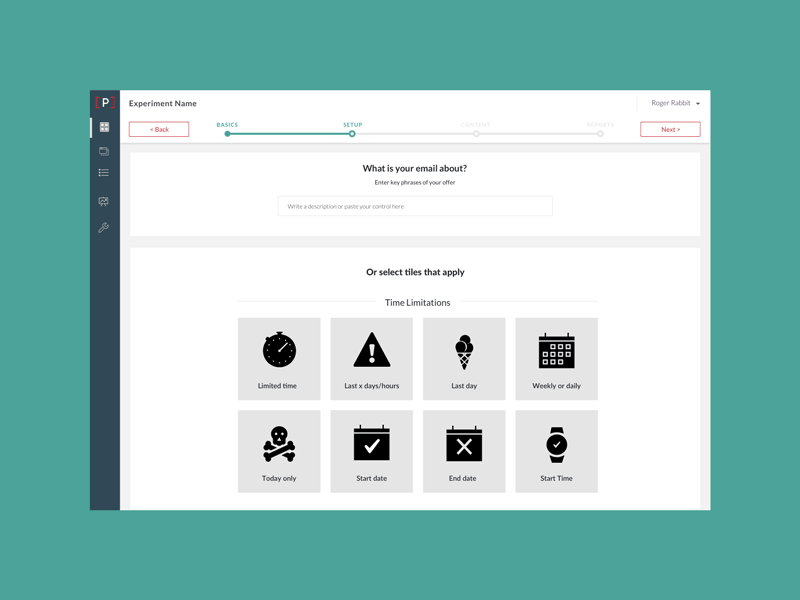Machine Learning
Technically a rebound from previous shot. Previously, tiles would realign themselves depending on which ones have been selected. It turned out to be more kinetically interesting, cognitively fatiguing. Having the user visually readjust to their remaining options is simply inefficient. In such a data implementation b2b experience as ours, at this point of the flow, users are task oriented and aim to complete their duties as quickly as possible. Leveraging the concept of habituation, aka static tiles, would be best in aiding in user and product goals, workflow efficiency.
Other question addressed:
How can we inject ML into the ux of our own b2b product?
Answer:
When the user types in a phrase, the algorithm is called to fetch its associated tiles.
I've further accounted for a "delete" tile state, along with a manual select option if the ML fails/the user would like more control over their experience
